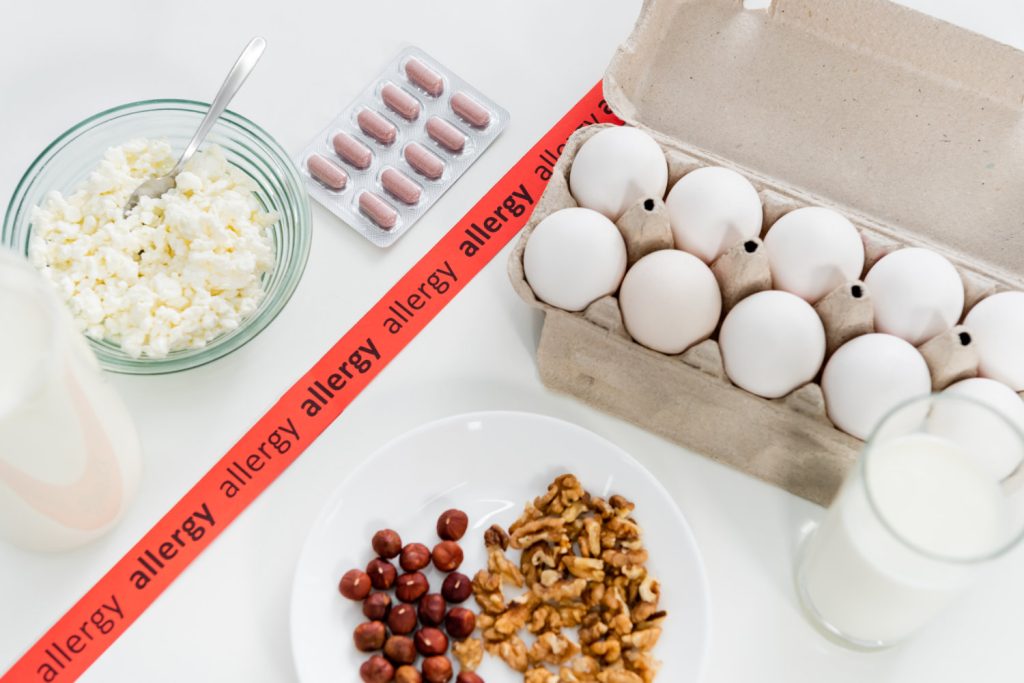Healthy Affordable Grocery Shopping
 With food prices rising, it’s difficult for many Americans to afford groceries – especially healthy ones. Food insecurity is defined as “the state of being without reliable access to a sufficient quantity of affordable, nutritious food,” and affects more people than you may think. Food insecurity is on the rise globally. In 2020, 1 in 10 Americans reported sometimes or often not having enough to eat within the last week.
With food prices rising, it’s difficult for many Americans to afford groceries – especially healthy ones. Food insecurity is defined as “the state of being without reliable access to a sufficient quantity of affordable, nutritious food,” and affects more people than you may think. Food insecurity is on the rise globally. In 2020, 1 in 10 Americans reported sometimes or often not having enough to eat within the last week.
To help you afford healthy groceries reliably, we’ve compiled a list of proven tips and tricks to help you cut costs at the grocery store.
Plan meals ahead of time
Planning meals before going to the grocery store is a great way to ensure you buy everything you need – and nothing you don’t. When planning meals, make sure you’re taking stock of what is already in your kitchen. Try looking for recipes that incorporate food that’s about to go bad or food you’ve had stowed in the back of the pantry.
Stick to your grocery list
It’s easy to get pulled into buying something you don’t need. But take a moment to think about what’s on your grocery list and meal plan for the week. If it doesn’t fit with your meal plan this week, plan for it next week.
Cook large portions and use leftovers
Also called meal-prepping, taking the time to cook large portions one or two days of the week can save time later in the week. For example, if your family is planning on eating chicken for 3 meals this week, cook all the chicken you’ll need on one day when you’re not as busy.
If you’re interested in learning more about meal-prepping on a budget, check out this website.
Buy foods in their less processed form
Many foods are cheaper in their less processed form. For example, whole, dry beans are often cheaper than refried beans, and a block of cheese is cheaper than shredded cheese. If there’s a food you can buy less processed and turn into the ingredient you need, you’ll be eating healthier and cheaper.
Buy generic
Many people are concerned generic brands of food are of a lower quality or are made differently than name-brand foods. All food manufactures have specific standards they must follow, meaning generic brands are the same quality as national brands. While it may not be practical to buy generic for every single item, switching name-brand for generic wherever you can is a great way to save money.
Stock up on sales
When kitchen staples, cleaning supplies, something with a long shelf life, or your favorite items are on sale, stock up!
Replace meat with other proteins
Meat is often the bulk of the grocery bill, so consider trying more vegetarian meals. Eggs, tofu, beans, and lentils are great alternatives to meat and are much cheaper.
Buy frozen fruits and vegetables
Did you know frozen fruits and vegetables can be more nutritious than fresh fruits and vegetables? Fruits and vegetables that are frozen are picked at peak-ripeness (when they’re the most nutritious) and frozen immediately, locking in all their nutrients. Since the nutrient difference between fresh and frozen is marginal, you should buy the cheapest option.
Make coffee and tea at home
Coffee can be expensive whether you’re buying pods, beans, or from your favorite coffee shop. If you’re an avid coffee drinker, it’s worth considering buying your favorite beans whole and in bulk. Grinding your own beans may seem like a hassle, but it will yield a fresher, cheaper cup of coffee.
Use less expensive foods
Some foods are just cheaper to produce. Try implementing the following into your recipes:

- Broccoli
- Onions
- Bagged spinach
- Russet potatoes
- Sweet potatoes
- Canned tomatoes
- Carrots
- Green cabbage
- Butternut squash
- Brown rice
- Oatmeal
- Canned beans
- Dried lentils
- Edamame
- Quinoa
- Air-popped popcorn
- Bananas
- Oranges
- Frozen berries
- Apples
- Cantaloupe
- Kiwi
- Canned fish
- Pork
- Eggs
- Chicken breast
- Cottage cheese
- Yogurt
- Milk
Click here for more nutritional information on these foods.
Don’t be a food snob
Johns Hopkins University found that Americans throw out more food than they need to, often due to a fear of food poisoning or a desire to eat only the freshest food. Here’s what you need to know about expiration dates:
- Sell-By Date
- Refrigerated products come with a sell-by date. You can still eat food after the sell-by date.
- Dairy products are good for 1 week after the sell-by date
- Eggs can be eaten 3-5 weeks after the sell-by date
- Best if Used by Date
- For the best quality and flavor, eat food before the best if used by date. It’s not spoiled after this date, but it may begin to dry out or not taste as good.
- Use-By Date
- This food should be consumed by this date for the best quality, but your food can still be good after this date depending on what it is.
- Expiration Date
- Products with an expiration date may not function the same after the date listed. For example, yeast may not rise, and medications may not offer the same results.
- Quality Assurance Date
- Quality assurance is usually listed on products with a long shelf-life, such as boxed soups, boxed macaroni and cheese, peanut butter, and cereal. Quality assurance simply means your food will be of high quality until that date, but after it may lose flavor.
- Refrigerated products come with a sell-by date. You can still eat food after the sell-by date.
With these tips, you’ll find savings at the grocery store and reduce food waste in no time. If you’re experiencing food insecurity, use Feeding America’s local locator to find a food bank or food pantry near you.




